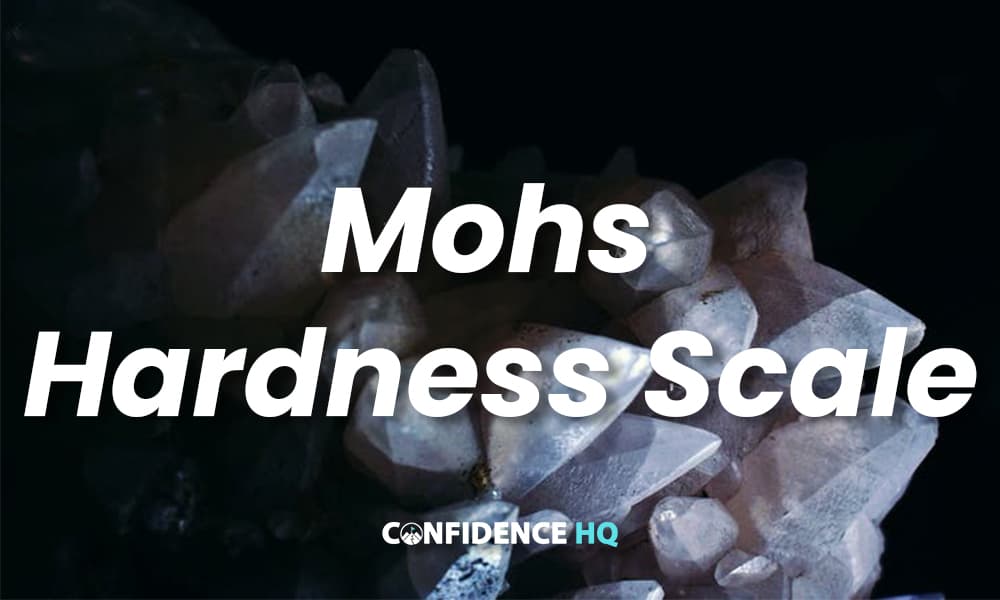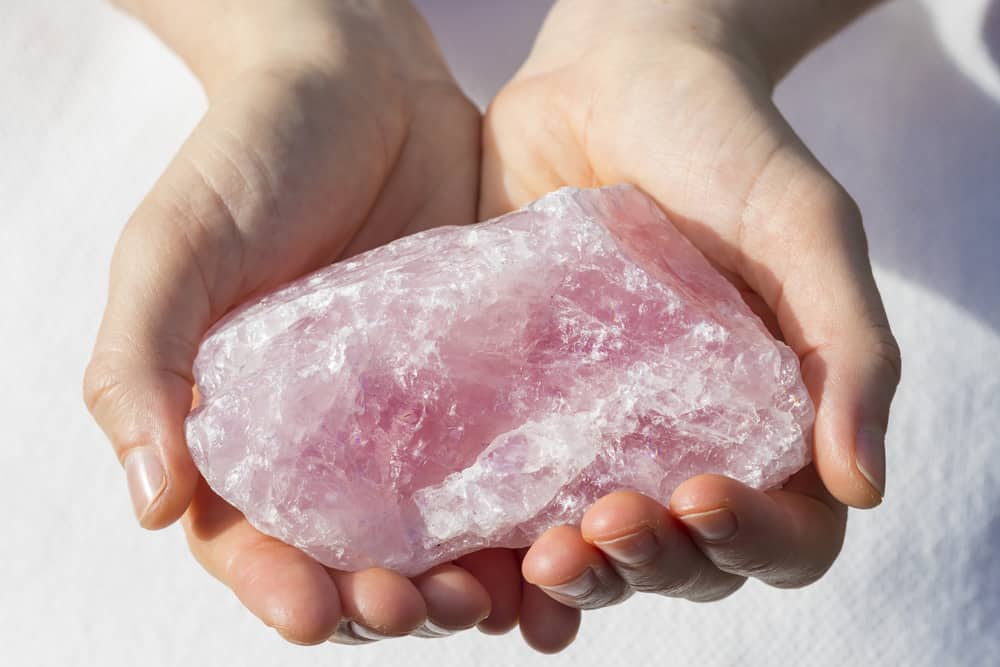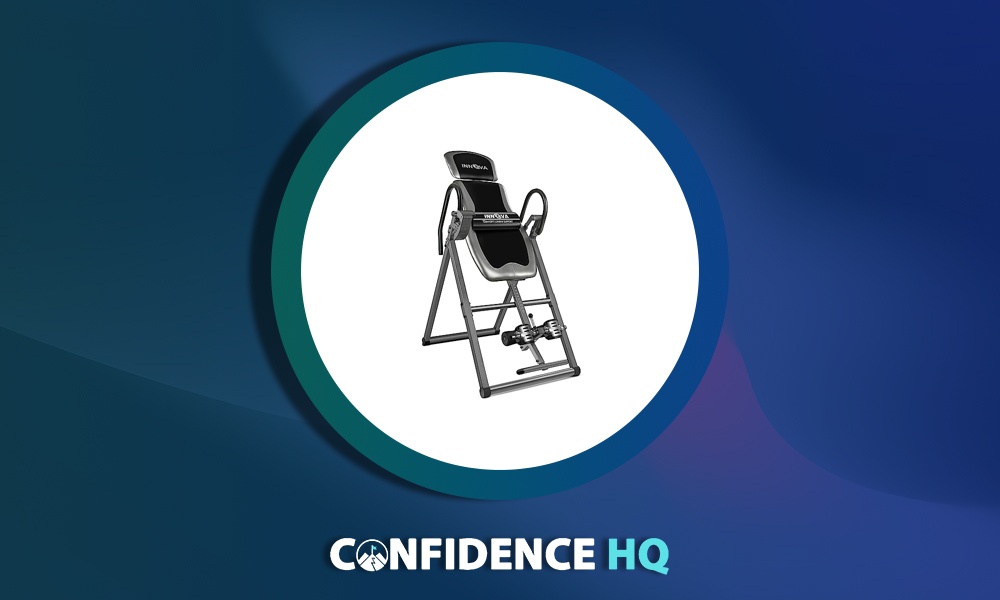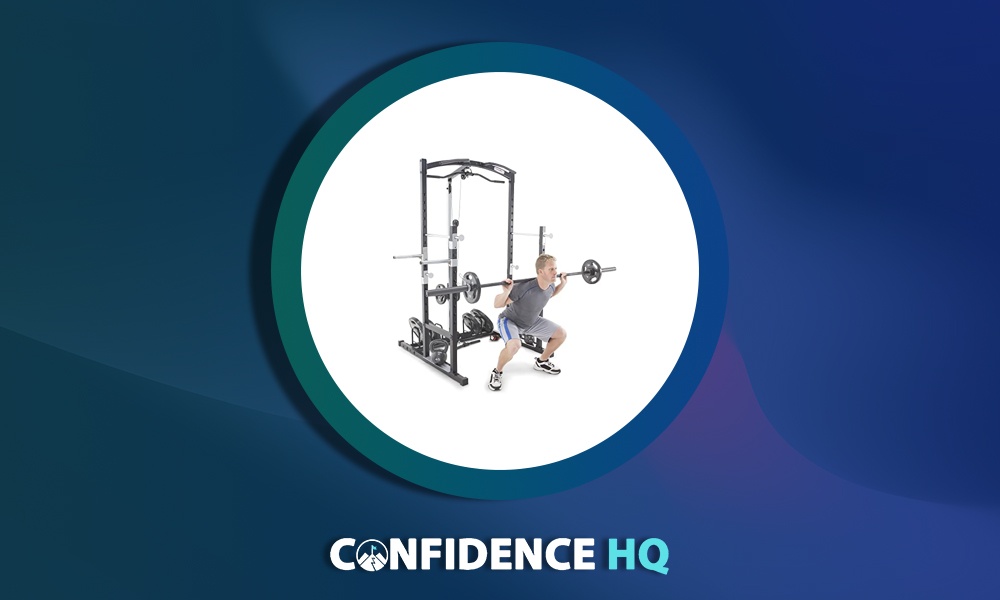Cleaning crystals with water is a wonderful way to purify them energetically.
However, only a few crystals can be safely placed in water (especially salt water).
In general, crystals with a Mohs hardness rating of 5 or less should not be submerged in water.
There are a few additional things to keep in mind while getting crystals wet, which I’ll discuss in this article!
Table of Contents
What is the Mohs Hardness Scale?

The Mohs Hardness Scale is a one-to-ten scale that measures the resistance of minerals to determine their hardness. This is accomplished by combining two minerals and seeing which one scrapes the other, inflicting harm, and which one survives injury. The harder a mineral is, the higher it ranks on the Mohs scale.
When it comes to crystals and their water tolerance, this scale is important since the softer the material, the more likely it is to be harmed by water. These are crystals with a Mohs hardness of less than 5, and the closer they are to 0 on the scale, the more sensitive they are to water.
Any crystal with a Mohs scale rating of 5 or lower should not be submerged in water. If kept in water for a lengthy period of time, these crystals will disintegrate or shatter. Some tougher crystals should be kept away from water as well. Crystals containing minerals that can rust or leak poisons into water are examples of this.
Here’s a graphic showing the Mohs hardness scale, which ranges from 1 to 10, with the softest at the bottom and the hardest at the top:
Some of the more often used crystals that should be kept out of water are included in this table: Ammolite, Angelite, Azurite, Calcite, Celestite, Fluorite, Halite (Rock Salt), Lepidolite, Malachite, Rhodocrosite, and Selenite.
Which hard crystals should be kept away from water?
Hematite
Hematite, which has a Mohs hardness of 5.5-6.5, is similar to Magnetite but should be kept away from water since it is an iron oxide that rusts when exposed to water.
Lodestone (Magnetite)
Magnetite has a Mohs hardness of 5.5–6.5, although it should not be exposed to water. This is due to the fact that magnetite is an iron mineral, and water may cause metal to rust.
The distinction between Lodestone and Magnetite is that Lodestone is inherently magnetic and attracts other particles of iron. Because of its tremendous energy influence on humans, it has been employed throughout history to aid early civilizations as a navigation tool and in traditional healing rites.
Tangerine Quartz
With the exception of Tangerine Quartz, using water with quartz crystals is usually safe. However it’s different with the Tangerine quartz because iron oxide is the mineral that gives this quartz crystal its lovely orange color.
As you may know, iron and water do not mix well, and your tangerine quartz may begin to fade, change a different hue, or lose its gorgeous orange sparkle.
Which crystals are generally seen as safe to use in water?
- Agate
- Amethyst
- Aventurine
- Citrine
- Clear Quartz
- Jasper
- Rose Quartz
- Smoky Quartz
- Snow Quartz
- Tiger’s Eye
Can rose quartz go in water?

Yes, you may submerge your rose quartz stones in water without fear of their dissolving. They’re one of the few crystals on the planet that aren’t impacted by water.
When the crystal is held or submerged in water, it gains good characteristics. Rose quartz is one of the few crystals that is unaffected by salt, vinegar, alcohol, or honey, making it ideal for elixirs, tinctures, and crystal tonics.
You may have seen a sign for rose quartz being able to go in water when looking at a crystal finder chart. It may perhaps have been classified as “water friendly.” This implies that submerging your stone in water will help it preserve its shine and will not absorb any bad energy from the water.
You may also use the Mohs Hardness Scale to see if your stone is strong enough to withstand being submerged in water without breaking or harming it.
As I showed you before, Rose quartz has a Mohs hardness of seven out of ten, making it a water-resistant crystal. If you like, you can soak your rose quartz stones in water for a longer period of time.
which soft crystals are water-safe?
Amber
It is safe to assume that because it is a resin and a softer crystal on the Mohs Harness scale, it should not be submerged in water.
However, all of my amber has been ok in water in my experience, and I use it frequently. This is your decision, and you may try it out with stones you aren’t too attached to.
Chrysocolla
Because this stone is closely associated with the element of water, I like to wash it with water. Although it is a softer stone, I have discovered that running it under lukewarm water for short periods of time does not harm it.
Use your best judgment when deciding whether or not to expose your softer stones to water. If Chrysocolla is accidentally put in water, it should be discarded since Chrysocolla may render water harmful.
Jet Stone
Jet stone is actually a mineraloid that began as a piece of wood that was pushed into the soil through time and transformed into a gemstone. Hard jet, which was generated by carbon compression and salt water, will not be harmed by water, despite its Mohs scale rating of 2.5 to 4.
Long exposure to water may harm soft jet, which was generated by carbon compression and fresh water, however it is normally unaffected.
Carry on with awareness
While all of this concern of harming your crystals may be alarming, a little awareness goes a long way. Before you wash the crystal in water, do some research about it to give yourself the peace of mind. Take into account the pieces’ mineral composition, hardness, and porousness. Then, if you have any queries regarding these topics, turn to the internet for answers, especially if you are confused about a particular mineral.
Additionally, do some research to see whether the minerals in issue would leach dangerous compounds into the water, especially if you plan on putting them in the water for a long time.
Considering you have read the article this far, it’s probably safe to say that you do your due diligence and have nothing to worry about!
Conclusion
As a general rule, only water wash minerals with a Moh’s Hardness of 6 or above. The hardness and scratch resistance of minerals are measured on a scale of 1 to 10, with 1 being the softest and 10 being the hardest. Talc is the softest mineral on the scale (1). Diamond is the hardest mineral (10).
However, there are several exceptions, so don’t completely rely on the Moh’s Scale. Other considerations, like as iron content and porousness, are critical (readiness to absorb water).
If you have any questions, feel free to let me know in the comments below!















